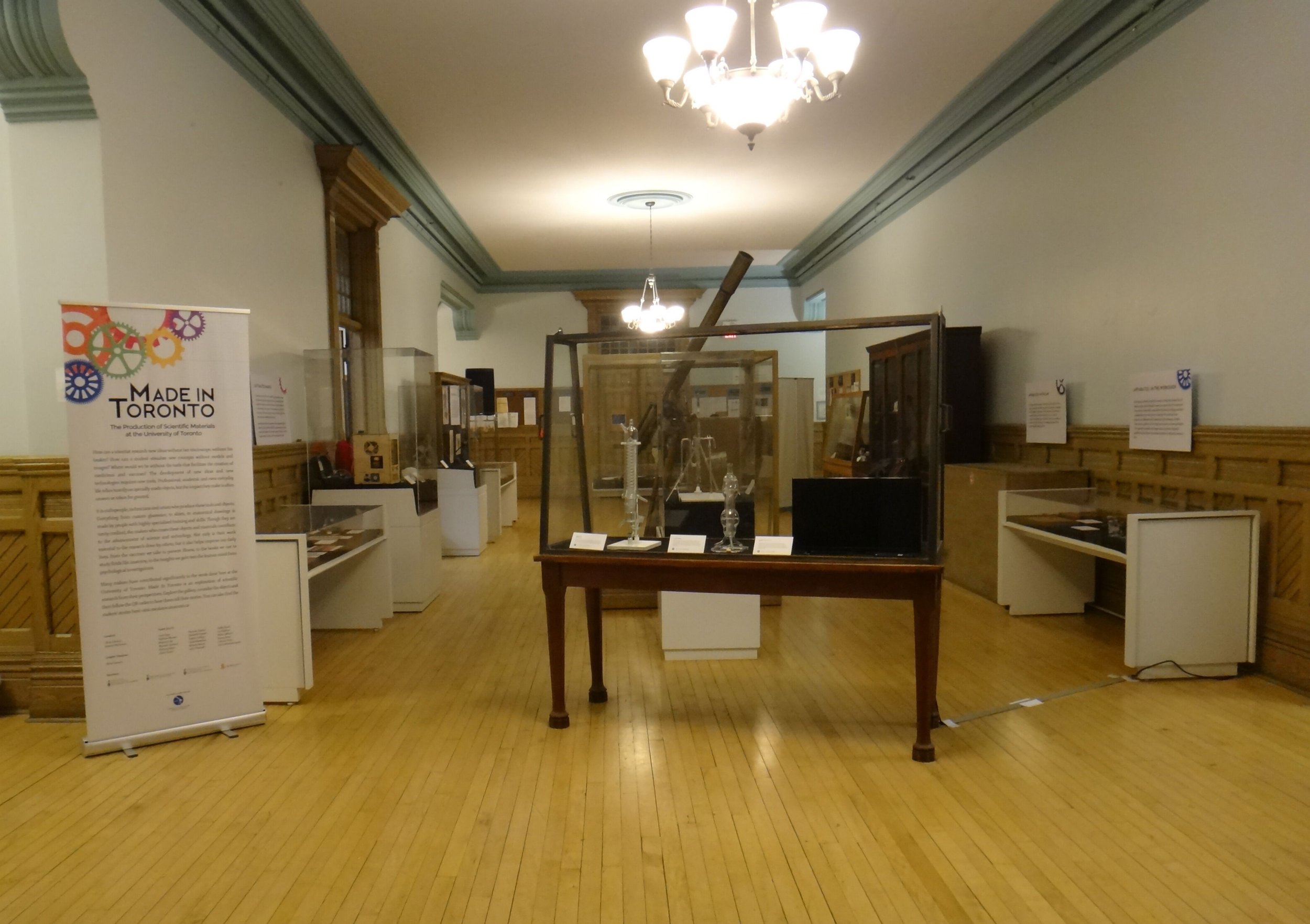Made in Toronto: The Production of Scientific Materials at the University of Toronto
April 1, 2016 - March 2017
University of Toronto Scientific Instruments Collection (UTSIC)
Victoria College, Third Floor
Olivia Gawron and Rowena McGowan
Made in Toronto is an interdisciplinary exhibition which focuses on locally made objects and the contributions of the often invisible people working in scientific fields—those who produce the instruments and materials necessary for the experimentation, development, teaching, and learning of knowledge from the many areas of science.
The exhibition is mainly intended for people who already frequent Victoria College, chiefly students and faculty. For this reason, we were not as strict about grade 8 level text as we might otherwise have been.
Intensive planning of Made in Toronto began in October of 2015. Objects were chosen by the end of January. Text was originally due at the end of February but this date was pushed back until the second week of March. Installation was March 28 - April 1, with an opening reception on April 1 from 7 - 9. It will close near the end of the winter semester of 2017, when it is replaced by the next exhibition.
Made in Toronto is staged on the third floor of Victoria College, as the UTSIC exhibition is every year. Loan objects came from the Department of Astronomy, Semaphore (in the Faculty of Information), Biomedical Communications (in the Institute of Medicine), Sanofi Pasteur Archives and University of Toronto Archives and Records Management. The videos are being hosted on the UTSIC website.
The project was sponsored by the Faculty of Information, the Institute for the History and Philosophy of Science and Technology, the Dunlap Institute for Astronomy and Astrophysics and Victoria College.
Made in Toronto features a collection of objects from UTSIC and several university departments, organized into five themes: Visual Representation, Making Medicine, Apparatus in the Lab, Apparatus in the Workshop and Automated Making. Each theme has at least one associated interview from a local maker, available online at the UTSIC website and through QR codes in the exhibition space. There is also a television in one of the cases constantly playing a demonstration of glassblowing. Didactics consist of two introductory banners, one at each end of the gallery, a large hanging panel for each of the themes, short informational labels on each of the objects and the eight labels with a QR code to access an interview, a picture of the interviewee and a quote from the interview.
Most of the marketing done was by word of mouth; featuring interviews with local makers meant that many people were personally invested in the project. The UTSIC social media intern also posted pictures and updates about the project on the UTSIC Twitter account.
We would like to thank our partners at UTSIC, Erich Weidenhammer, Sophie LeBlanc, Victoria Fisher and Elizabeth Koester. We would also to thank all of our interviewees: Anne Agur, Gurmeet Besla, Norman Evanson, Eileen Girard, Jack O’Donnell, Gabby Resch and Nancy Stiver for donating their time and expertise. A special thank you goes to David Mazierski, who not only agreed to an interview but also drew a series of anatomy drawings for us to use in one of our Visual Representation cases. ‘Made in Toronto’ shines a light on the people who produce the instruments and materials necessary for the creation and sharing of scientific knowledge.
science exhibit
science, technology, history, drawing, photography, 3d printing, medicine, mechanics, tools


